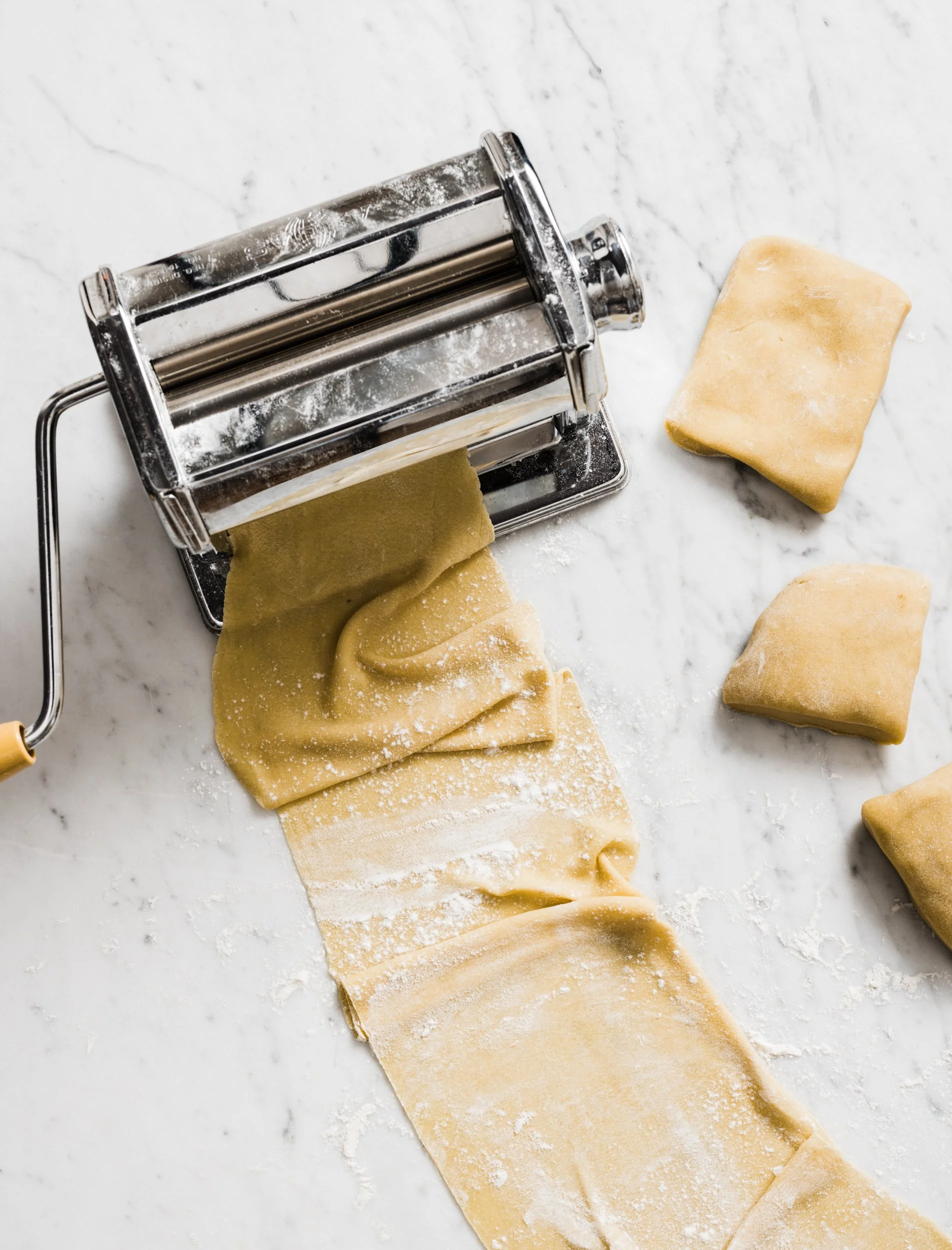Basic Pasta Dough
Photos by Michael Piazza / Styled by Catrine Kelty
When it comes to fresh pasta recipes, there are about as many different ratios of eggs, egg yolks and flour as there are pasta shapes in all of Italy. I’ve found the following combination to be easy to work with. It yields a supple pasta with a bit of chew—perfect for filling but equally good for noodles such as pappardelle or tagliatelle. The dough can be refrigerated for up to a day before rolling, and filled pastas can be frozen for 3 months. The best approach is to roll and fill one sheet at a time, otherwise the dough begins to dry out. If you’re making ravioli, roll 2 sheets, then fill.
Makes about 1 1/4 pounds
320 grams all-purpose flour, plus more for dusting
3 large eggs
4 large egg yolks
In a stand mixer fitted with the paddle attachment, combine the flour, eggs and egg yolks. Mix on low speed until the flour is mostly absorbed. Replace the paddle with the dough hook and knead on medium-low speed for 10 minutes. The dough should be firm and uniform with no bits of flour remaining in the bowl.
Transfer the ball of dough to a clean work surface and knead by hand for about 30 seconds. If there is any stickiness, lightly dust the surface with flour and continue to knead until the dough feels smooth. Loosely cover with plastic wrap and allow to rest for at least 30 minutes before rolling. Have a pastry brush and small bowl of water or a water-filled spray bottle close by.
When you’re ready to roll the pasta, cut the dough into four equal pieces, keeping three of them loosely covered with plastic wrap. Working on a lightly floured work surface, shape and stretch one piece of dough into a rough rectangle that is about 3 inches by 5 inches. Begin rolling on the widest setting of your pasta machine. Fold the dough into thirds, like a letter, and roll again through the widest setting. Do this two more times before proceeding to the next notch on your machine. If at any point the dough feels tacky, lightly dust with flour to prevent sticking to the machine.
Once you’ve moved past the widest setting, roll the dough one time through each setting of the machine, ending with the narrowest setting. Again, be sure to dust with flour throughout this process to prevent any sticking. If the sheet is getting too long to handle, cut in half and continue rolling. Place the finished dough (one 5-inch by 32-inch piece, or two 5-inch by 16-inch pieces) on a lightly floured work surface and proceed with your filling of choice. Repeat the rolling and filling with the remaining three pieces of pasta dough.
This recipe appeared in the Fall 2022 issue as part of a larger story on Stuffed Pastas.

